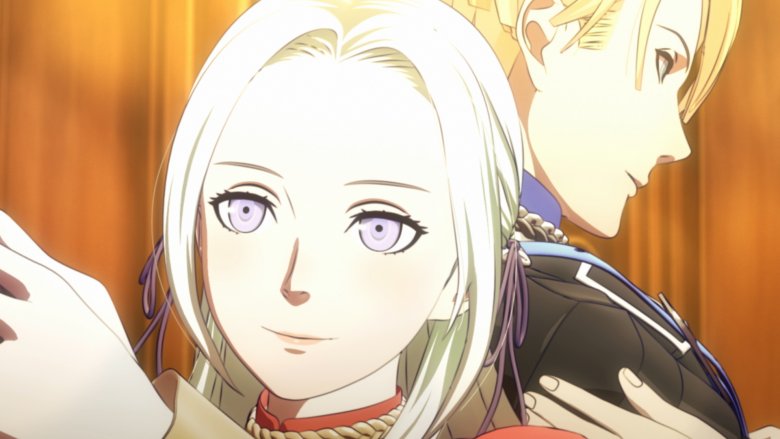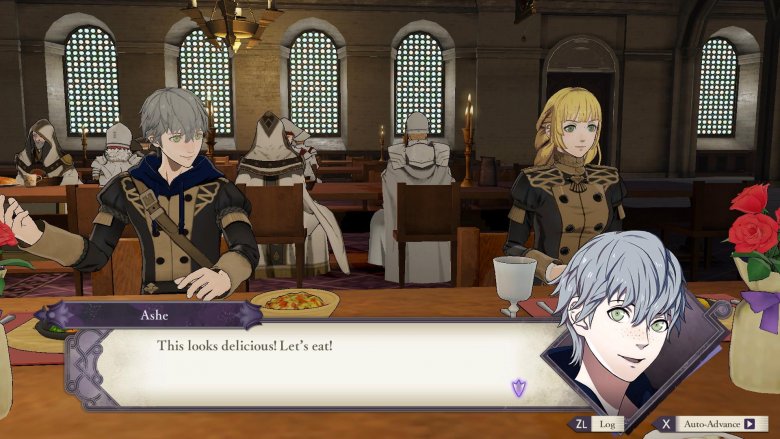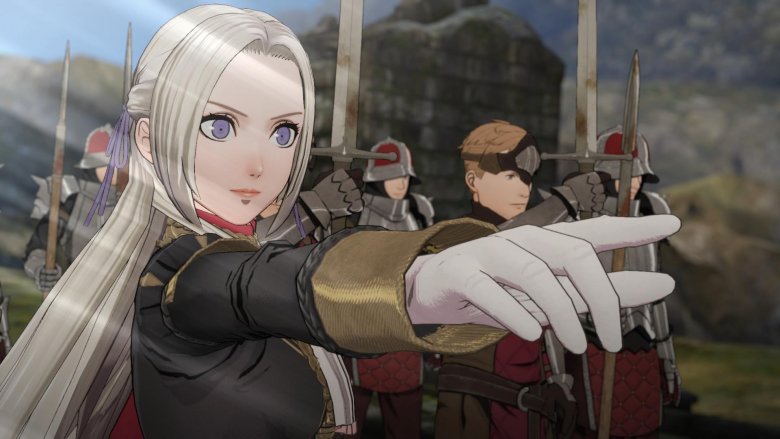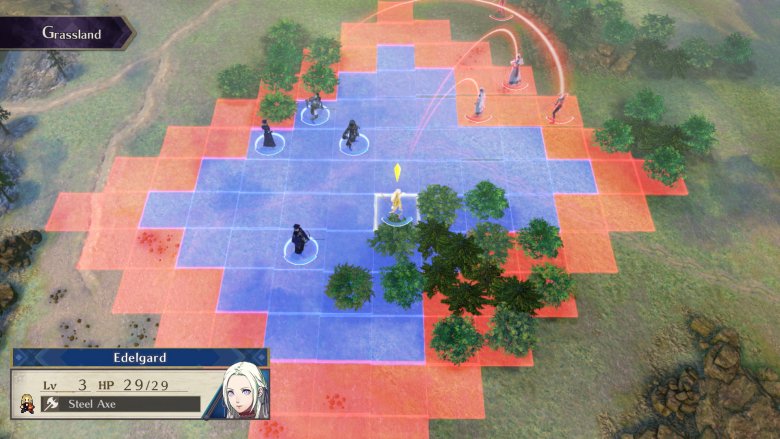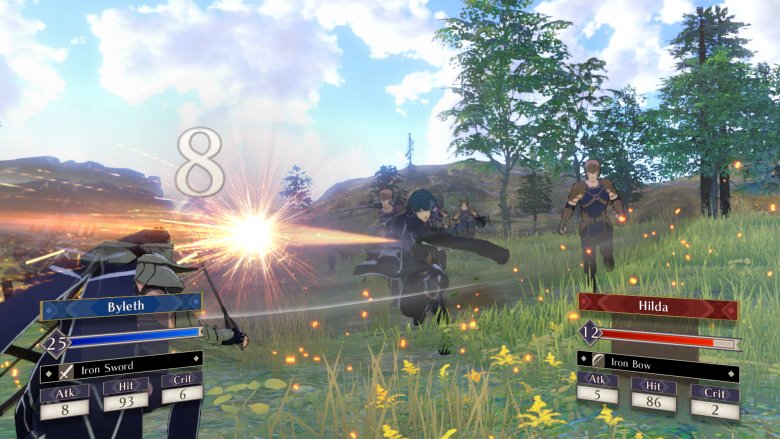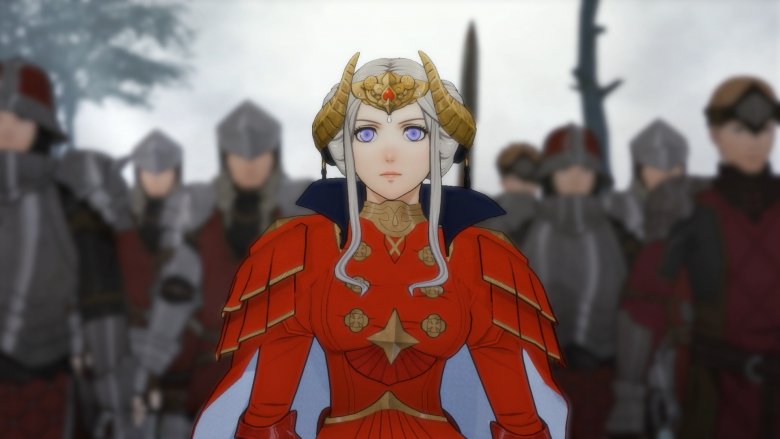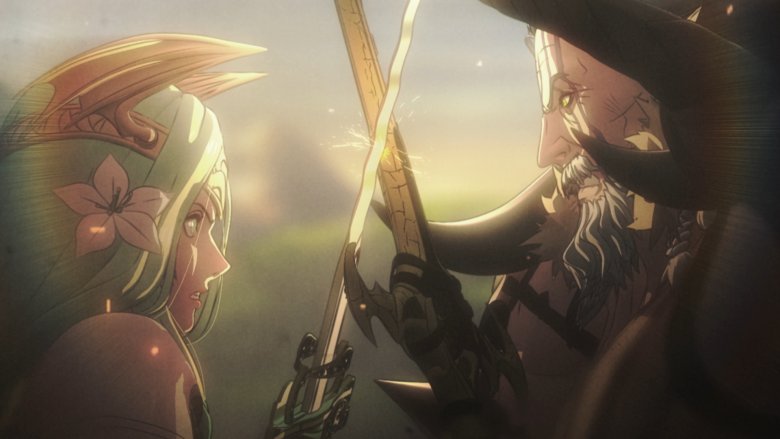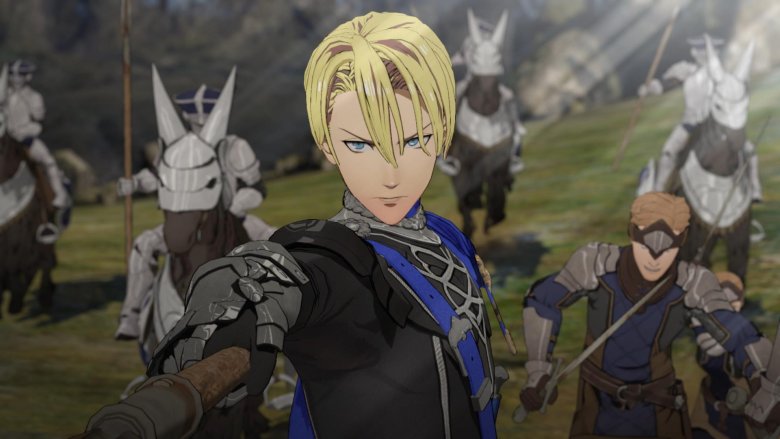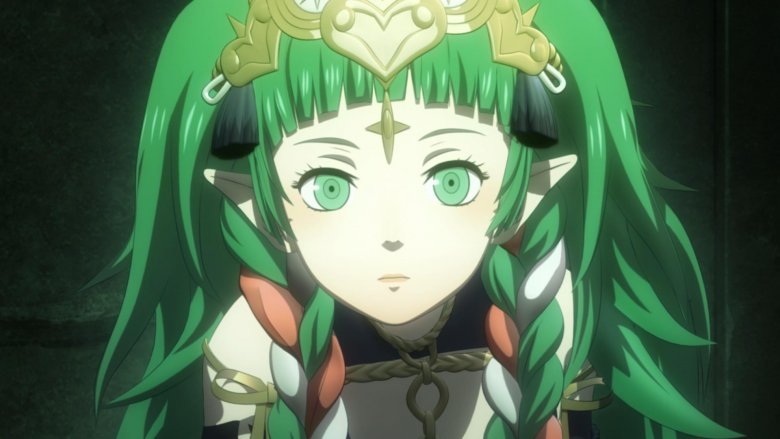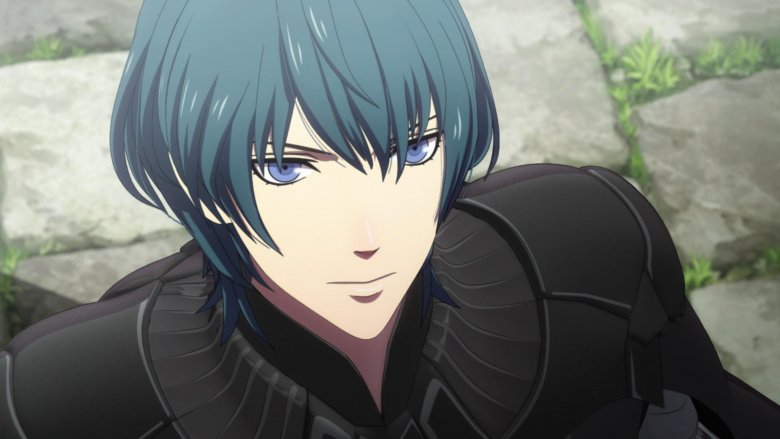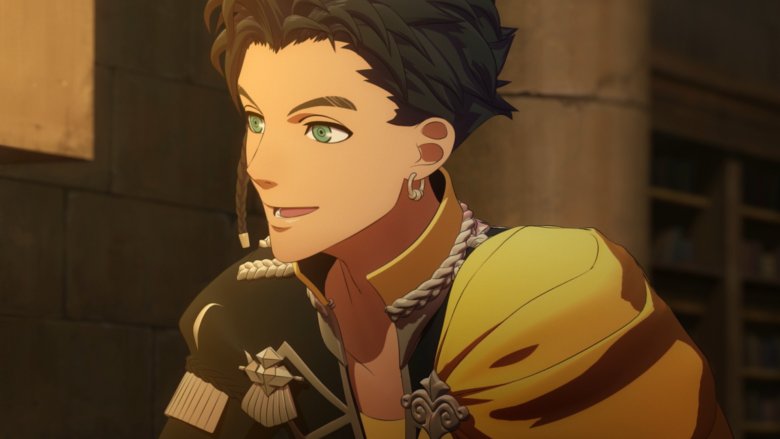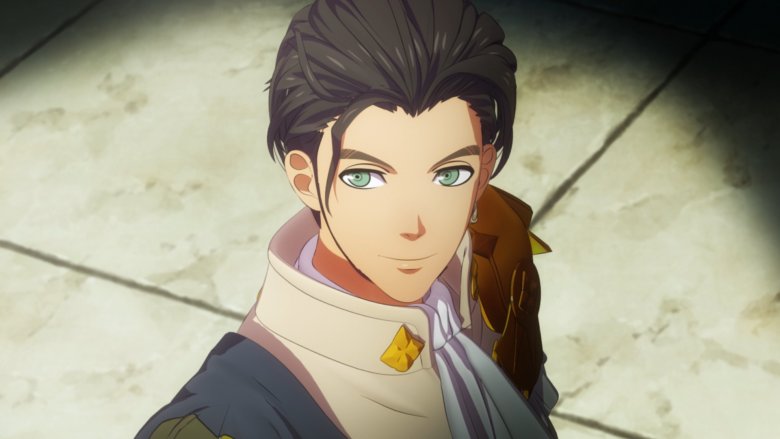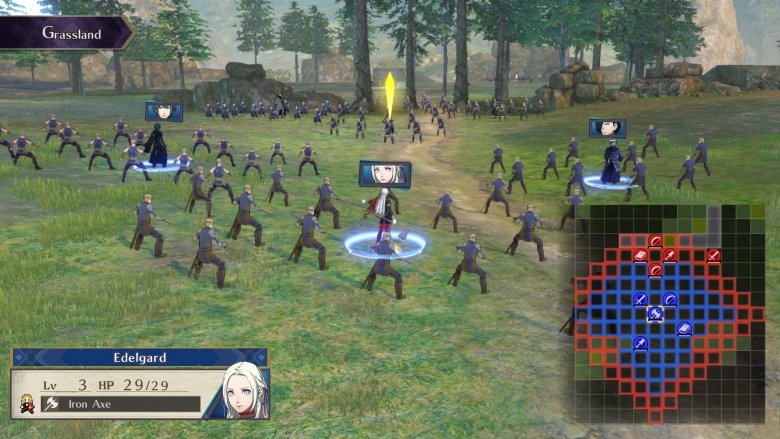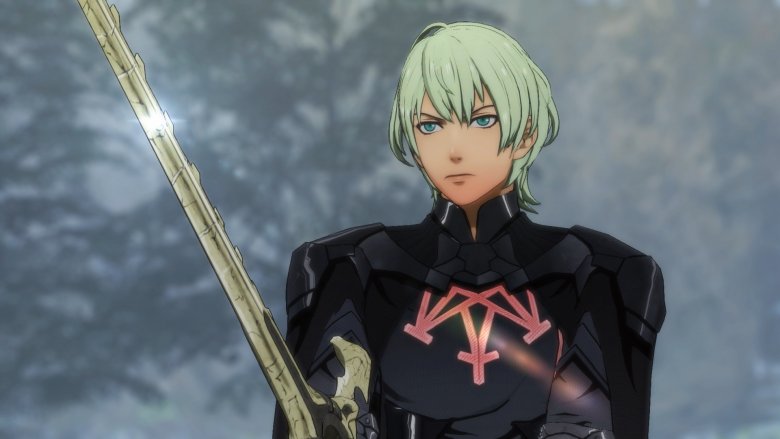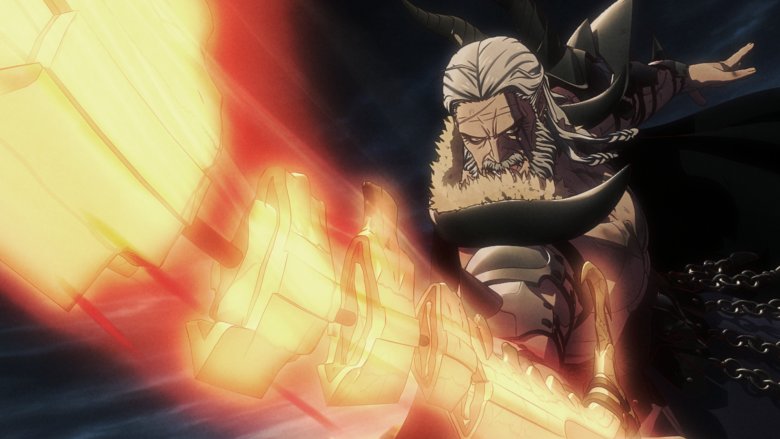Fire Emblem: Three Houses Release Date, Characters, Pre-Order And Editions
When people think of Nintendo, some pretty major names come to mind. Mario, Link, and Samus easily leap to the forefront, while everyone treasures those fond memories paying off their debts to Tom Nook. And of course, the worldwide sensation known as Pokémon continues to take the world by storm.
Unfortunately, you probably didn't notice a glaring omission on the list: Fire Emblem. The franchise has been in Nintendo's stable for nearly three decades, but it hasn't gotten the respect it deserves. These tactical RPGs by Intelligent Systems challenge the player's wits. You guide an army of units across a grid-based battlefield, all while dealing with an opposing military. More often than not, you'll probably lose some units, but that's half the fun.
With Fire Emblem: Three Houses just around the corner, the franchise has another chance of making it big in the mainstream. After its recent successes on the Nintendo 3DS, there are good reasons to jump onto the Three Houses hype train before it releases. Here's everything you need to know about the upcoming tactical RPG.
The release date: When does Fire Emblem: Three Houses deploy?
Fire Emblem: Three Houses deploys exclusively on the Nintendo Switch on July 26, in the height of summer. This marks the first time the franchise can call a mainline console home since Radiant Dawn came out on the Nintendo Wii in 2007. For more than a decade, the series has only been on handhelds, primarily the Nintendo DS and 3DS. In fact, this marks the first time we'll see Fire Emblem in true high definition, barring any GameCube or Wii modding.
The release date puts Three Houses in a prime spot to cash in on fans of strategy games. July and August are devoid of any strategy titles, making it the only real worthy option. However, it definitely has some contenders to worry about. It releases the same day as MachineGames' Wolfenstein: Youngblood, a spin-off title following Wolfenstein 2: The New Colossus. Additionally, just a week before, on July 19, Marvel: Ultimate Alliance 3 – The Black Order launches exclusively on the Switch, potentially creating some competition on the console.
What the critics are saying about Fire Emblem: Three Houses
After its release on July 26, critics have had nothing but nonstop praise for Fire Emblem: Three Houses. The game boasts an 88 rating on Metacritic, with a majority of reviews scoring above an 8. Take some of these hand-picked reviews as examples.
IGN's Brendan Graeber: "Seeing so many plotlines left unresolved surprised me, even though I found fulfillment in the 20+ story missions I'd completed. But it wasn't until I started again in New Game+ and joined the Black Eagles that I truly realized how much more complementary story content the other two houses had to offer." Score: 9.5/10
Polygon's Russ Frushtick: "I was so captivated when I finished my first 52-hour campaign with Claude, Ignatz, and the crew of the Golden Deer that I immediately went ahead and started a new one, desperate to see what the differences would be, what new friends I'd make, and which old friends I'd have to stab in the heart." Recommended
Game Informer's Kimberley Wallace: "Fire Emblem: Three Houses is ambitious, and takes more chances than previous entries in the series. The way it lets your role as professor play into both the narrative and gameplay is nothing short of fantastic. This is the most I've ever cared about my Fire Emblem characters, and that's incredibly high praise." Score: 9.5/10
Eurogamer's Martin Robinson: "It's a deeply emotional tactical game, one in which you end up invested in each unit. In that way, it's true to what's always made Fire Emblem so special – it's just that Three Houses expresses itself on a different scale, and a different style." Recommended
USgamer's Kat Bailey: "While it loses momentum in the second half, it still manages to come off as a striking reinvention of the well-worn Fire Emblem formula. That makes its first real console appearance in more than a decade a triumph." Score: 4.5/5
GameSpot's Kallie Plagge: "A second playthrough treads familiar ground in the beginning, but after learning and growing so much in the first, it feels fresh, too." Score: 9/10
Kotaku's Gita Jackson: "In Fire Emblem: Three Houses, Dimitri, Edelgard, and Claude all envision a future for Fódlan that's radically different from the one they live in. By the end of the game, one of their dreams will be realized. It's nice to spend time in a world where that's not only certain, but believable."
Three special editions
At the time of writing, only one retailer offers any sort of pre-order incentive for Fire Emblem: Three Houses. If you pre-order the game via GameStop, you'll also secure yourself an exclusive set of pins depicting the Black Eagles, the Blue Lions, and the Golden Deer.
For North American Fire Emblem fans, the Seasons of Warfare Edition might be up your alley. For $100, you'll get a steelbook, an art book, a calendar, and a sound selection CD. Oh, and a copy of Three Houses, too. Japan gets a similar special edition, simply called the Fódlan Collection. This box comes with everything in the Seasons of Warfare Edition except the calendar.
Finally, European fans can keep an eye out for the Fire Emblem: Three Houses Limited Edition. It's largely similar to the Seasons of Warfare Edition with a few tweaks. For example, instead of a CD, you'll get a USB stick with a design on it. Additionally, like the Japanese Fódlan Collection, there won't be a calendar. Instead, the Limited Edition comes with a set of pins, similar to the GameStop pre-order mentioned earlier.
A brief history of Fire Emblem
The first title in the franchise, Fire Emblem: Shadow Dragon and the Blade of Light, released in 1990 on the Famicom. If you haven't heard of it, we don't blame you. The game only came out in Japan, and to this day, Nintendo hasn't officially released it worldwide (though a remake, Fire Emblem: Shadow Dragon, hit North America in 2009). In fact, the first time the West saw anything related to Fire Emblem was in Super Smash Bros. Melee, when Marth and Roy joined the roster.
Then in 2003, the West finally saw its first proper Fire Emblem game: The Blazing Blade. Since then, most of these games made their way around the world, but sales simply didn't flourish. The franchise was on the chopping block. The developers at Intelligent Systems prepared themselves while working on Fire Emblem: Awakening, fully aware that this could be the last.
Instead, the 3DS title was a smash hit. After its launch, the game eventually moved almost two million copies by December 2014. Since then, the franchise has experienced more success than ever before. Fates, the next title, had the biggest US launch in series history.
What's the gameplay like?
Fire Emblem isn't just any old tactical RPG; it's the tactical RPG. The genre wouldn't exist as we know it without Intelligent Systems and Fire Emblem. If you've never played these games, you should be warned that they're not for the faint of heart. You control an army, sometimes ranging up to 20 or more soldiers. Each one takes up a tile on a grid-based map, and you move them around to attack enemies. Some maps have extra objectives, like saving a hostage or escaping the area, but more often than not, this is all about army versus army.
You can equip each unit with a slew of gear, like different swords, axes, staves, and tomes, depending on their class. However, each character has certain strengths and weaknesses you have to always keep in mind. For example, if you have flying units, you'll want to keep them away from archers, who absolutely shred their wings. And here's the emotional kicker: if a unit dies, you lose them forever. Recent Fire Emblems have a mode that takes away permadeath, but if you do that, are you really playing Fire Emblem?
The Fire Emblems story so far? Doesn't matter.
Three Houses is the 16th entry in the series. Fortunately, if you've never played a Fire Emblem game, you don't need to worry about jumping in this late. These games don't have an obvious ongoing narrative, and you won't miss any major plot points.
Of course, if you've played previous titles, you might catch some references that you'll appreciate. And we aren't forgetting that some of the games directly build off each other. For example, Blazing Blade takes place before Binding Blade, while Radiant Dawn features a save transfer mechanic so you can continue the story from Path of Radiance.
Furthermore, hardcore Fire Emblem fans will tell you that some of the games are set in the same universe. Colloquially called the Archanea Series, games like Awakening and Echoes: Shadow of Valentia all take place in the same world at different times. Nonetheless, Three Houses hasn't made any references to past games, and the continent of Fódlan seems new. So don't worry about any previous ongoing narrative.
The story in Three Houses: There will be war
In Three Houses, you'll play as the newest student to join the Officer Academy, nested within the walls of Garreg Mach Monastery. The continent is broken up between three major nations: the Adrestian Empire, the Holy Kingdom of Faerghus, and the Leicester Alliance. The monastery sits in neutral territory at the center of the three, maintaining the peace.
In the Officer's Academy, students from all three nations study under their respective houses: the Black Eagles, the Blue Lions, and the Golden Deer (mirroring the nations above). These are the students you'll interact with and teach throughout your time at the monastery.
However, at some point in the game, there will be a five-year time skip, at which point all three nations will be at war. What sparks the conflict hasn't been revealed yet, but the situation will challenge players with the emotional toll of war. Some of your former students could become enemies, setting an intriguing backdrop for the rest of the story.
Three houses, three reasons to play
Toward the beginning of the game, you'll have to choose which house to represent. This house — and by extension, this nation — will be the one you side with after war breaks out. That means throughout the entire game, you'll interact with the characters from your nation the most, teaching them, molding them, and leading them into battle. And naturally, that means roughly two-thirds of the main cast will become your enemy.
By making such a pivotal choice in the beginning, Three Houses gives you three different ways to play the game, begging you to play it thrice. Furthermore, you can make your experience a little more modular, as you can convince students from other houses to join yours. By earning their respect through various means, you can essentially create an all-star team of your own, regardless of national boundaries. Perhaps the best part about this decision is that it makes your experience fairly unique. Your friends might choose a different house and convert different students, enriching the discourse surrounding the game.
Who are these characters, anyway?
Fire Emblem games are known for having a plethora of characters at hand, and Three Houses is no different. Each house has eight characters associated with them. While we don't need to get into the weeds naming each one, you should at least know their leaders. Edelgard leads the Black Eagles, but she plays double duty as the axe-wielding princess of the Adrestian Empire. The blonde-haired Dimitri plays a similar role for the Blue Lions, as he's also heir to the Faerghus throne. Finally, Claude leads the Golden Deer, and you can probably guess his role in the Leicester Alliance.
The staff members of Garreg Mach Monastery also play key roles in Three Houses. The most important character would likely be Rhea, the leading archbishop of the church. This green-haired woman invites your character to the monastery in the first place, sparking your grand adventure through Fódlan.
Additionally, a mysterious, time-bending amnesiac named Sothis lives in your brain. She saves your character from death in the beginning, and afterward, she lends her time-manipulating powers to you.
Become the ultimate teacher
Your character becomes a professor at the Officer Academy, and that's more than just a title. Your occupation actually translates to gameplay. Every week, you set your students up for success through various tutoring mechanics, like seminars and lectures. These moments go beyond the classroom, as you prepare your students for the many battles they have ahead of them.
This naturally expands upon the class progression system that Fire Emblem has had for years. Now, any character can become almost any class, as long as they qualify for it. If you want Linhardt to be an archer, just train him to use a bow. If you need some sort of cavalry, you can train Ferdinand to ride a horse so he can become a cavalier. This makes your army far more modular than in preceding games, and it melds well with the professor premise.
Be friends with everyone
To be clear, your character isn't all business though. Sure, you're a professor, but even professors like to have fun, right? Aside from your tutoring responsibilities, you have the opportunity to befriend the people you meet at Garreg Mach Monastery. By interacting with the various students and colleagues in the academy, the world of Three Houses comes to life. For example, between lessons, you can grab lunch with your students, learning more about them and their lives. Keep in mind, though, that these students could die in battle at any moment. If you lose a unit, it's even worse when you've gotten to know them over various lectures and lunches.
Furthermore, Three Houses features a fully realized 3D version of your home base. You'll run around, seeing other people living their lives in the monastery. The mechanic was pioneered with the 3DS games, but seeing it in glorious high definition is a first for the series.
Define the relationships
These friendships mean something on the battlefield as well. Whenever two units fight next to each other on the battlefield, their relationship grows stronger. When these relationships hit certain milestones, the pair will boost each others' stats in combat, increasing their likelihood of survival. They're pals, after all; they wouldn't want to lose each other in battle.
These relationships aren't limited to your character, either. Any of your units can befriend any of your other units. You don't have to be involved. This presents a variety of rewards for players. For one, there's the strategic reward on the battlefield; if two characters work well together, bolstering their relationship will only make them better. Out of combat, you'll see them have cute conversations, based on their level of friendship.
Nintendo also confirmed that romantic relationships would return in Three Houses. These pairings would have the strongest bond (obviously), translating to some of the best combat bonuses available. However, unlike Awakening, we won't see the time-traveling offspring of these pairings. Furthermore, romance can't be pursued until after the five-year time skip.
Every unit has backup now
For the first time in the series, each unit can have a battalion assigned to them. These groups of soldiers provide backup to your talented characters, and you can actually see them on the battlefield when the camera zooms in. But these squads do more than look pretty. They provide passive bonuses to the stats of your units, like +3 physical attack or +1 to your hit chance.
Battalions can do more than that, though. Each one comes equipped with a Gambit Skill, which can only be used a certain number of times per combat. These powerful abilities vary in their effect, but they seem to be incredibly useful bonuses. For example, one can increase the number of spaces your units can move in that turn. Another can boost your damage for that round of battle, making that unit a force to be reckoned with. Furthermore, pairing friendly allies together on the battlefield can multiply the effect of a Gambit, augmenting them even further.
Combat in Fire Emblem: Three Houses
On top of managing every unit's equipment, battalion, and class, you'll need to keep an eye on something called Combat Arts. Every character can equip multiple arts, and each one comes with some special effects in combat. Each one fits a different situation, making certain characters excel against specific enemy types. For example, some Combat Arts do more damage to archers, turning your unit into a powerful deterrent for enemy archers.
Veterans might recognize the mechanic from the previous Fire Emblem game, Echoes: Shadow of Valentia. However, this time around, arts deduct your weapon's durability rather than your character's heath. When a weapon's durability reaches 0, it breaks, making it far weaker. This means at every turn, you'll have to weigh your options. Is it worth shredding the lifetime of a weapon to land some massive damage now? Or should you play the long game, considering how many other units the opposing army has lined up?
No more Weapon Triangle
For those of you who are new to Fire Emblem, the Weapon Triangle is a core tenet of the combat that's been around since the fourth game in the series. Depending on what weapon your unit uses, they'll have an accuracy and damage advantage or disadvantage over the opponent. Generally speaking, swords beat axes, axes beat spears, and spears beat swords.
It's a rock-paper-scissor trichotomy that spices up the strategic challenge. Longtime fans probably have these relationships among weapon types memorized like the back of their hands. With Three Houses, Nintendo and Intelligent Systems decided to throw it all out the window.
This bold decision turns Fire Emblem on its head, and in a way, everyone has to grow accustomed to this new aspect of battle. You might be worried that the lack of a Weapon Triangle would leave a strategic void in the combat. However, the Combat Arts fill that hole nicely, promising more complex layers of depth to every engagement.

